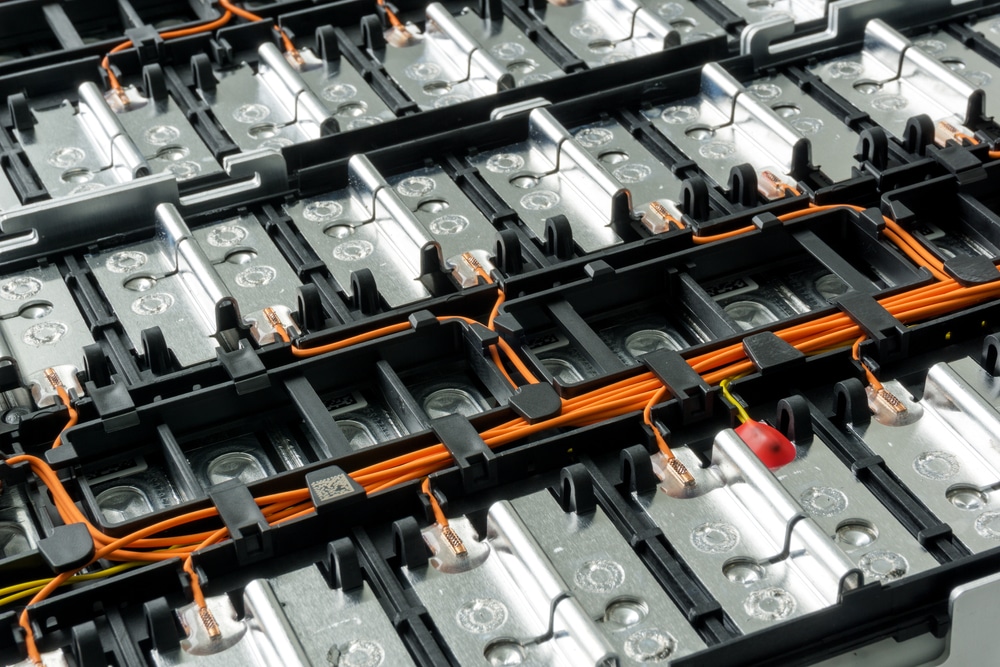A groundbreaking technique from ETH Zurich slashes the usage of fluorine in lithium metal batteries, doubling energy storage capacity while boosting safety and environmental sustainability.
Lithium metal batteries emerge as a top contender for the forthcoming generation of advanced, high-capacity batteries. They offer at least double the energy storage per unit volume compared to the commonly utilized lithium-ion batteries. Consequently, this advancement could enable an electric vehicle to cover twice the distance on a single charge or allow a smartphone to necessitate less frequent recharging.
Currently, lithium metal batteries still have a key downside: the liquid electrolyte necessitates significant quantities of fluorinated solvents and fluorinated salts, which amplifies its environmental impact. Conversely, without the inclusion of fluorine, lithium metal batteries would be unstable, resulting in them ceasing to operate after very few charging cycles and being susceptible to short circuits, overheating, and ignition. A team led by Maria Lukatskaya, Professor of Electrochemical Energy Systems at ETH Zurich, has now crafted a fresh method that substantially decreases the fluorine quantity needed in lithium metal batteries, thereby making them more eco-friendly, more stable, and cost-effective.
Enhanced battery safety and efficacy through a stable protective layer
The fluorinated compounds from electrolytes aid in forming a protective layer around the metallic lithium at the negative electrode of the battery. “This protective layer is akin to the enamel of a tooth,” Lukatskaya elaborates. “It safeguards the metallic lithium from continuous interaction with electrolyte components.” In its absence, the electrolyte would rapidly deplete during cycling, causing the cell to fail, and the lack of a stable layer would lead to the formation of lithium metal whiskers – known as ‘dendrites’ – during the recharging process rather than a uniform flat layer.
If these dendrites make contact with the positive electrode, it would result in a short circuit, potentially causing the battery to heat up to the point of ignition. The capability to regulate the characteristics of this protective layer is therefore critical for battery performance. A stable protective layer bolsters battery efficiency, safety, and longevity.
Reducing fluorine content
“The challenge was how to diminish the added fluorine amount without compromising the stability of the protective layer,” mentions doctoral scholar Nathan Hong. The team’s innovative method employs electrostatic attraction to achieve the desired reaction. In this method, electrically charged fluorinated molecules act as carriers to transport the fluorine to the protective layer. Consequently, only 0.1 percent by weight of fluorine is necessary in the liquid electrolyte, a decrease of at least 20 times compared to prior studies.
The streamlined method promotes greener batteries
The ETH Zurich research team delineates the novel method and its fundamental principles in a paper recently released in the journal Energy & Environmental Science. A patent application has been filed.
One of the primary challenges was identifying the appropriate molecule to which fluorine could bond and that would also decompose under the correct conditions once it had reached the lithium metal. As the team elucidates, a major advantage of this technique is its seamless integration into the existing battery production process, without incurring additional costs to alter the production setup. The lab used batteries the size of a coin. In the next phase, the researchers aim to evaluate the scalability of the method and apply it to pouch cells used in smartphones.
Reference: “Robust battery interphases from dilute fluorinated cations” by Chulgi Nathan Hong, Mengwen Yan, Oleg Borodin, Travis P. Pollard, Langyuan Wu, Manuel Reiter, Dario Gomez Vazquez, Katharina Trapp, Ji Mun Yoo, Netanel Shpigel, Jeremy I. Feldblyum and Maria R. Lukatskaya, 2 May 2024, Energy & Environmental Science.
Image Source: Smile Fight / Shutterstock






























